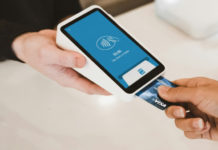You’ve always done pretty well at bringing new employees on board, whether you had an official onboarding procedure or not. You’d set the new employee up at his or her desk, give them their laptop and the password to get on the company’s workspace, probably set them up with a peer mentor and a way to contact you if they need assistance, and they were on their way.
That was yesterday, however, and the world has changed a lot in the past several months. Now, everyone is at home, and you have to take care of an employee’s onboarding in a remote atmosphere. How are you going to do it? Let’s examine why onboarding is a powerful tool, things that you should include in your onboarding procedure, and programs that you can use to make sure your onboarding is successful as well as benefit the rest of your team.
Yes, Onboarding Is Necessary
Do you have a remote onboarding procedure? If not, it’s something that you can’t afford to overlook anymore. Being completely remote, at least for the formidable future, your new employee may feel isolated. Starting with onboarding is a great way to introduce your new employee to which type of company culture your organization has. Is it team-oriented or more elite? The sooner your new employee finds out, the sooner he or she will know if they’re going to fit in.
There are some pretty astounding facts about structured onboarding that cannot be ignored. Almost 70% of employees are prone to stay three years or more with a company if they have a positive onboarding experience. In addition, when organizations have a routine onboarding procedure, they increase their retention rate by a full 50%. It costs an average of $3000 and $18,000 to fill a vacant position, so you must do what’s necessary to keep employees with you. Onboarding helps you do that.
While Your Company Is Remote
First of all, remote work is not a new thing; it had actually gained ground really quickly before COVID-19 with IT, online marketing, education, and accounting and finance taking the lead. The number of employees who worked at least part-time from home jumped 25% in just four years from 2015 to 2019, and by 2019, nearly 75% of the worldwide workforce worked from home at least once a week.
Since everything is remote right now, having a remote onboarding procedure from day one will help your new employees associate with their co-workers. It also helps you build a stronger team. Make sure, when you communicate via text, that you remain friendly and personable, and that you know when the written word just isn’t enough and it’s time to jump on a video call.
Having a remote onboarding procedure, in addition to your regular communication with the rest of your team, will help all of them conquer productivity challenges caused by working from home. It’s easy to fall victim to diversions and alienation when working from home in addition to having issues with technology and even time zone differences. Regularly communicating with your team will help you avoid many of these problems.
The Ultimate Onboarding Checklist
Create a remote employee onboarding checklist that can be referred to as you are setting up and organizing your employee onboarding program. This checklist should include the following:
- Order a laptop, keyboard, and mouse for your new employee.
- Get the IT department to help them set up their home office.
- Provide them with a company t-shirt or coffee mug.
- Present them a welcome letter from their team members or the CEO.
- Assist them with filling out all of the new hire paperwork.
- Make certain that the new employee knows how to use office-wide communication tools.
- Set goals and expectations from day one.
- Arrange a role-specific training meeting as well as a training meeting with IT.
Doing these things from their first day on will help your new employee feel as though they are part of the team and make them informed on their specific role in the company and quickly as possible.
Tools for Managing Your Remote Team
In addition to having remote onboarding in place, if your whole team is working remotely, you must have the right tools in place to make sure that everyone can communicate effectively as well as be as productive as possible. These tools are a great place to start:
- Slack — a messaging app that will get rid of back-and-forth emails. Your team will be able to message each other in real-time.
- Dropbox — a file-sharing program that will allow you to share common files. You can also use this app to collaborate with members of your team.
- Asana — a project management tool. You can delegate tasks to team members, and it will show you the progress of the group as well as the progress of specific members.
- Skype — an online video conferencing tool. It will allow you to have face-to-face meetings with your team.
With many businesses working remotely right now, other tools for remote work are springing up all of the time. Look to see what is available. You might be surprised at what you find.
Having a remote onboarding process is no longer an option; it is a necessity. But with these tips and tools, you can have a winning onboarding process ready to go in no time. With such a process in place, you will be in a position to welcome your new employees, to bring them up to par on their position within the company, and to better retain them for the long haul.




































